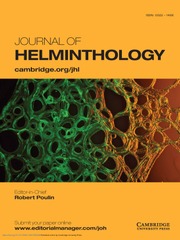No CrossRef data available.
Article contents
Worms within worms: First identification of parasitic nematodes in nemerteans
Published online by Cambridge University Press: 27 October 2025
Abstract
We report the first identification of nematode parasitism in a nemertean host (Arctostemma arcticum), representing a novel host-parasite interaction in marine ecosystems. Larvae of the anisakid nematode were discovered within the rhynchocoel of A. arcticum collected from the White Sea, suggesting transmission via ingestion of infected crustaceans – a previously undocumented pathway. The nematode was identified as Phocanema bulbosum through both morphological and molecular analyses.
The presence of nematode in nemertean A. arcticum implies trophic transmission through nemertean predation on infected amphipods, supported by hoplonemertean feeding strategy. While some fish occasionally consume nemerteans, their low predation frequency suggests A. arcticum could act as a dead-end host.
This study expands the known host range of Anisakidae, though it remains uncertain whether nemerteans serve as competent hosts in the P. bulbosum life cycle. Nevertheless, the findings highlight the need to assess nemerteans’ potential influence on parasite dynamics in fisheries and aquaculture, particularly where they coexist with intermediate and definitive hosts.
Information
- Type
- Short Communication
- Information
- Copyright
- © The Author(s), 2025. Published by Cambridge University Press

